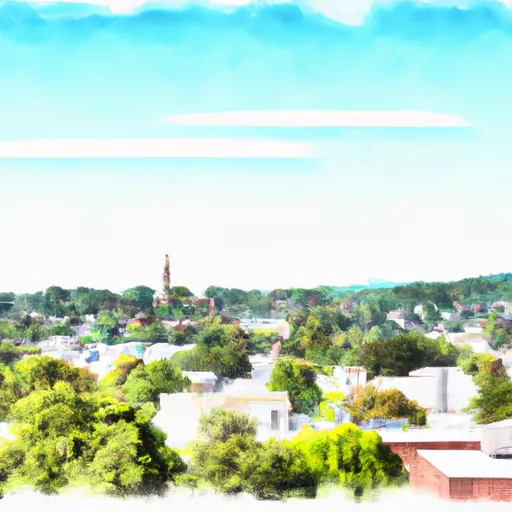-
 Snoflo Premium
Snoflo Premium
Get unlimited access to all our content
With no Ad interruptions! - Start Your Free Trial Login with existing account
Monroe
Eden Index
Climate
5.5
•
Recreation
6.2
•
Community
•
Safeguard
4.4/10

Monroe, Massachusetts is a small town located in Franklin County. The climate in Monroe is classified as humid continental, with four distinct seasons. Summers are warm and humid with temperatures ranging from the mid-70s to mid-80s Fahrenheit. Winters are cold and snowy, with temperatures dropping to the 20s and occasional below-freezing temperatures. Spring and fall bring mild temperatures, perfect for outdoor activities.
Monroe is surrounded by natural beauty, with several lakes and rivers in the area. The Deerfield River is a prominent hydrology constituent, offering opportunities for fishing, kayaking, and whitewater rafting. The Monroe Bridge State Forest is a popular outdoor recreation spot, offering hiking trails, picnic areas, and camping grounds. The forest is also a great place for birdwatching and wildlife observation.
Other outdoor activities in Monroe include exploring the nearby Berkshire East Ski Resort, which offers skiing, snowboarding, and mountain biking. The town is also home to Monroe State Forest, which features hiking trails, fishing spots, and scenic views.
Overall, Monroe, Massachusetts provides a picturesque setting with a variety of outdoor recreation opportunities for nature enthusiasts, making it an ideal destination for those seeking a blend of adventure and tranquility.
What is the Eden Index?
The Snoflo Eden Index serves as a comprehensive rating system for regions, evaluating their desirability through a holistic assessment of climate health, outdoor recreation opportunities, and natural disaster risk, acknowledging the profound impact of these factors on livability and well-being.
Climate Health Indicator (CHI): 5.5
Monroe receives approximately
1416mm of rain per year,
with humidity levels near 82%
and air temperatures averaging around
6°C.
Monroe has a plant hardyness factor of
5, meaning
plants and agriculture in this region thrive during a short period during spring and early summer. Most
plants will die off during the colder winter months.
By considering the ideal temperature range, reliable water supplies, clean air, and stable seasonal rain or snowpacks, the Climate Health Indicator (CHI) underscores the significance of a healthy climate as the foundation for quality living.
A healthy climate is paramount for ensuring a high quality of life and livability in a region, fostering both physical well-being and environmental harmony. This can be characterized by ideal temperatures, reliable access to water supplies, clean air, and consistent seasonal rain or snowpacks.
Weather Forecast
Streamflow Conditions
Lower Connecticut
Area Rivers
Lower Connecticut
Snowpack Depths
Lower Connecticut
Reservoir Storage Capacity
Lower Connecticut
Groundwater Levels
Recreational Opportunity Index (ROI): 6.2
The Recreational Opportunity Index (ROI) recognizes the value of outdoor recreational options, such as parks, hiking trails, camping sites, and fishing spots, while acknowledging that climate plays a pivotal role in ensuring the comfort and consistency of these experiences.
Access to outdoor recreational opportunities, encompassing activities such as parks, hiking, camping, and fishing, is crucial for overall well-being, and the climate plays a pivotal role in enabling and enhancing these experiences, ensuring that individuals can engage in nature-based activities comfortably and consistently.
Camping Areas
| Campground | Campsites | Reservations | Toilets | Showers | Elevation |
|---|---|---|---|---|---|
| DAR State Forest | 50 | 1,456 ft | |||
| Granville State Forest | 22 | 1,135 ft | |||
| Savoy Mountain State Forest | 45 | 1,989 ft | |||
| Mohawk Trail State Forest | 56 | 762 ft | |||
| Mt. Greylock State Reservation | 35 | 2,411 ft | |||
| Clarksburg State Park | 45 | 1,111 ft | |||
| Windsor State Forest | 24 | 1,845 ft | |||
| Chester - Blanford State Forest | 12 | 516 ft | |||
| Historic Valley | 114 | 952 ft | |||
| Tolland State Forest | 93 | 1,473 ft |
Nearby Ski Areas
Catastrophe Safeguard Index (CSI):
The Catastrophe Safeguard Index (CSI) recognizes that natural disaster risk, encompassing floods, fires, hurricanes, and tornadoes, can drastically affect safety and the overall appeal of an area.
The level of natural disaster risk in a region significantly affects safety and the overall livability, with climate change amplifying these risks by potentially increasing the frequency and intensity of events like floods, fires, hurricanes, and tornadoes, thereby posing substantial challenges to community resilience and well-being.
Community Resilience Indicator (CRI):
The Community Resilience Indicator (CRI) recognizes that education, healthcare, and socioeconomics are crucial to the well-being of a region. The CRI acknowledges the profound impact of these elements on residents' overall quality of life. By evaluating educational resources, healthcare accessibility, and economic inclusivity, the index captures the essential aspects that contribute to a thriving community, fostering resident satisfaction, equity, and social cohesion.

